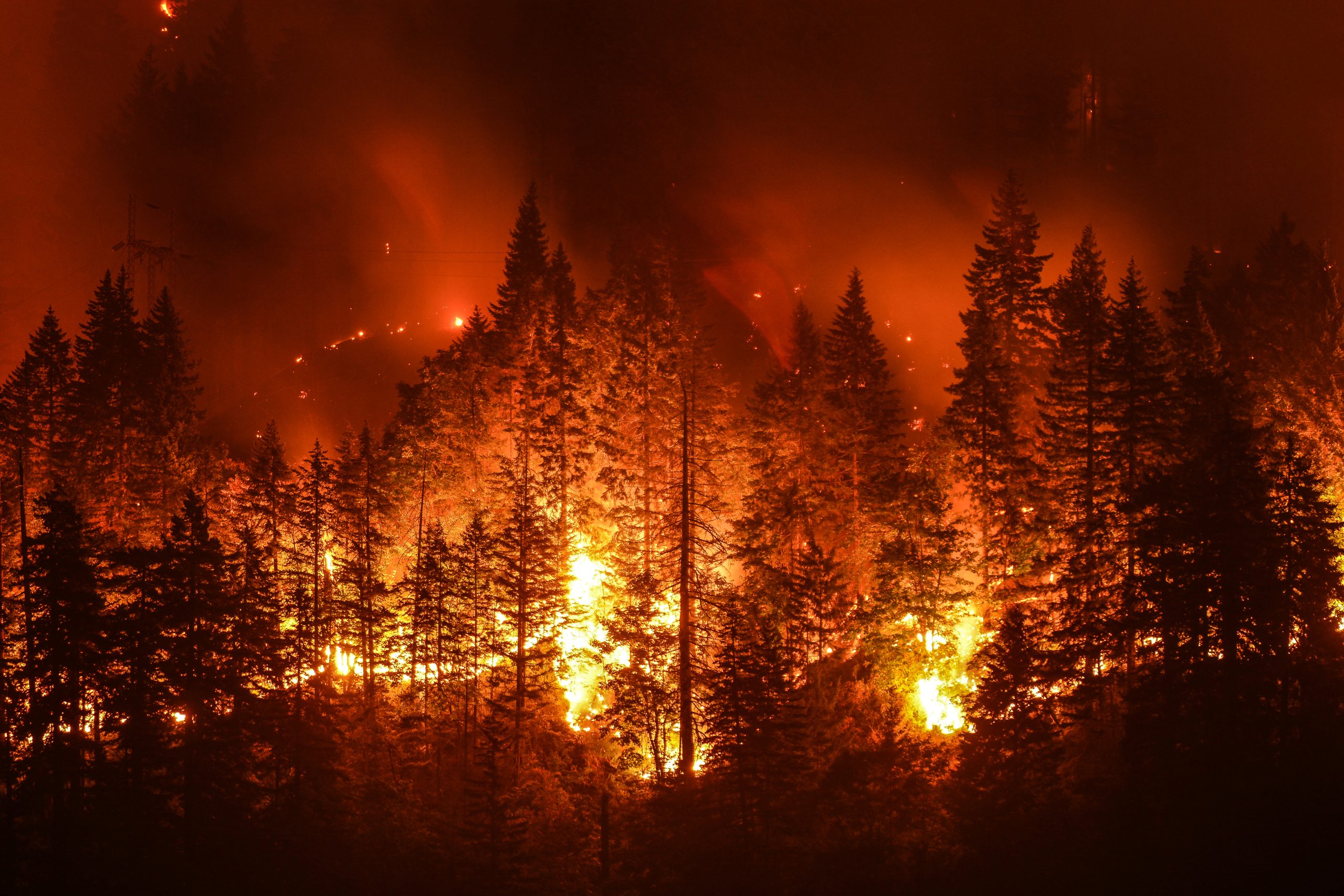By Megan Bailey
As our planet’s weather patterns change, wildfires have become more frequent, intense, and destructive. Understanding fire weather and its impacts is crucial for communities around the world to prepare and protect themselves from the growing threat of wildfires. Increased wildfire activity, the societal implications of fire weather, and the strategies that can be implemented to mitigate these risks must be explored to prepare communities for the future.
The Science Behind Fire Weather
Fire weather refers to weather conditions that promote the ignition and rapid spread of wildfires. Key factors include:
- Temperature: Higher temperatures can dry out vegetation, making it more flammable.
- Humidity: Low humidity levels reduce moisture in the air and vegetation, increasing fire risk.
- Wind: Strong winds can spread flames quickly and carry embers over long distances.
- Precipitation: Lack of rainfall leads to dry conditions that fuel wildfires, while certain seasonal patterns can create intervals of dry weather followed by storms that produce lightning, igniting fires.
Societal Impacts of Increased Wildfire Activity
The rise in wildfire frequency and intensity has far-reaching consequences for society:
- Public Health: Wildfire smoke contains harmful pollutants that can cause respiratory problems, cardiovascular issues, and other health complications. Recent research also shows that wildfires can cause “dust enhancement,” creating large dust storms that can last days or weeks.
- Property Damage: Homes, businesses, and infrastructures are increasingly at risk of being destroyed by wildfires.
- Economic Costs: The financial burden of firefighting efforts, property loss, and rebuilding can be staggering for communities and governments.
- Ecosystem Destruction: Wildfires can devastate forests, wildlife habitats, and water sources, leading to long-term ecological damage.
- Displacement: Evacuations and loss of homes force people to relocate, often permanently disrupting lives and communities.
- Increased Flooding: Forests that are near cities act like sponges, storing excess runoff and slowing water down. When heavy rainfall happens in an upstream forest after a wildfire, there is no tree canopy to slow down the water and the soil is less able to store runoff. As a result, flash floods can quickly happen with even relatively small amounts of rainfall.
Mitigating the Risks: Strategies for Communities
To protect themselves from the growing threat of wildfires, communities must adopt a multi-faceted approach:
- Early Warning Systems: Investing in advanced fire detection and early warning systems can help communities respond more quickly to emerging threats.
- Fire-Resistant Building Codes: Implementing and enforcing building codes that require fire-resistant materials and designs can reduce the risk of property damage.
- Vegetation Management: Regularly clearing dry vegetation and creating defensible spaces around properties can help slow the spread of wildfires.
- Community Education: Educating residents about fire safety, evacuation plans, and preparedness measures is crucial for ensuring community resilience.
- Collaborative Efforts: Coordination between local, state, and federal agencies, as well as community organizations, is essential for effective wildfire prevention and response.
The increasing threat of wildfires due to changing fire weather patterns poses significant challenges for society. By understanding the factors that contribute to fire weather and implementing comprehensive mitigation strategies, communities can reduce their vulnerability and enhance their resilience to wildfires. Proactive measures and collaboration will be key to safeguarding lives, property, and the environment from the devastating effects of wildfires.





